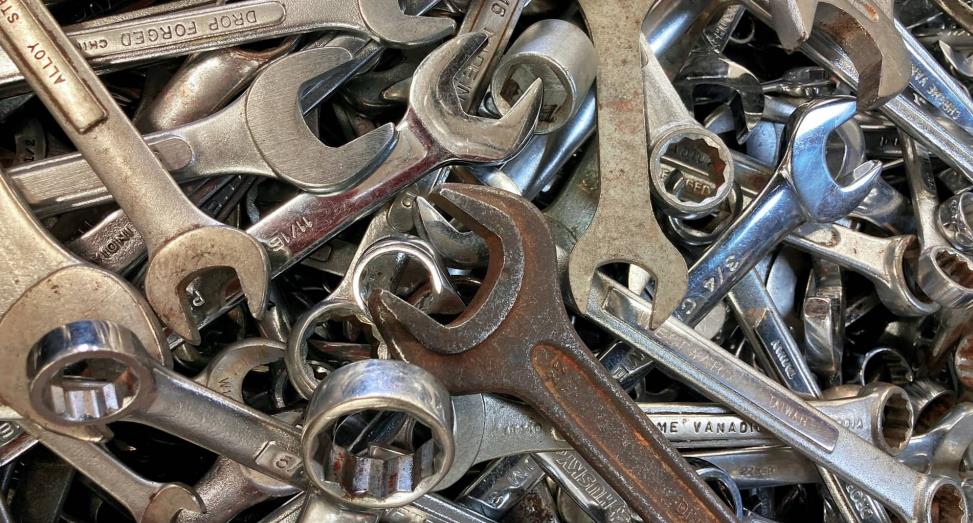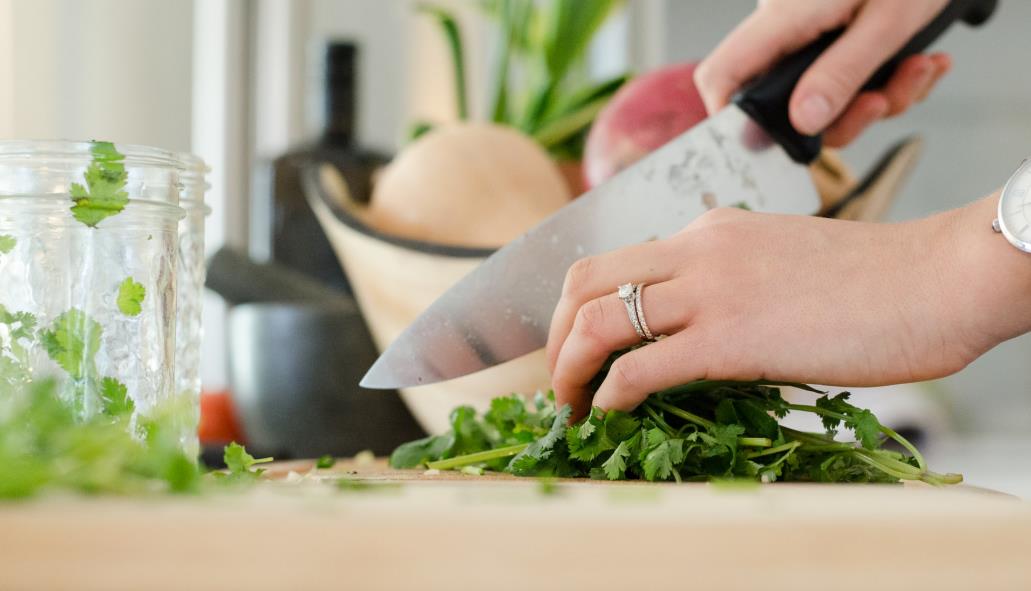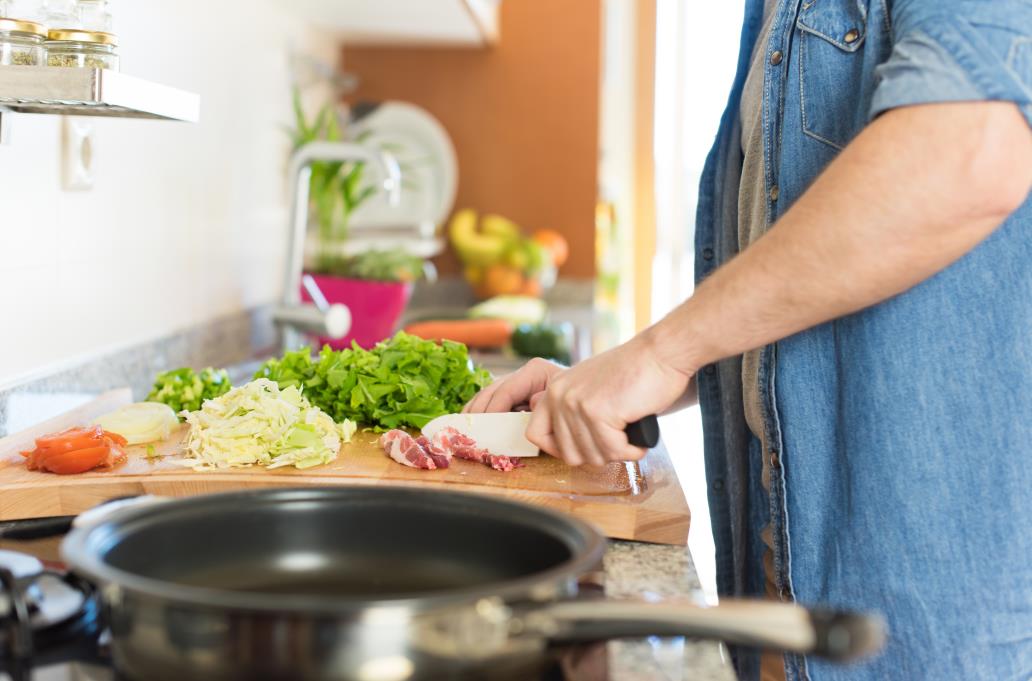When searching for a new knife, the huge number of blade materials can be confusing. Even if you have chosen carbon steel over stainless steel or ceramics, there is another decision to make. What kind of carbon steel knife do you want? One alloy commonly used to make tools is 1055 steel. You may be curious about this material and how it compares to other carbon steel varieties.
1055 steel is an alloy in the 10xx steel series and has a medium carbon content of 0.5-0.6%. This steel is praised for having good toughness and workability. 1055 steel knives tend to be affordable and easy to sharpen as well. The toughness of this metal lends itself to use in weapons such as swords, machetes, and hunting tools.
With a moderate carbon content, a 1055 steel knife is still vulnerable to corrosion. If you have the money and want an elite carbon steel knife, it is worth looking for a different alloy.
In the next sections, we will talk more about the structure of 1055 carbon steel and explain how the components determine its properties. We will compare it to other steels in the 10xx series and give you tips on caring for carbon steel blades.
Table of contents
What is 1055 steel?

1055 steel is one of the most famous members of the 10xx carbon steel series. For those who are unfamiliar, 10xx is a code from the SAE numbering system which classifies different steel alloys. The 10xx, 11xx, 12xx, and 15xx groups all contain some type of carbon steel. The 10xx group refers to pure carbon steel alloys that contain primarily iron, carbon, and under 1% of Manganese.
1055 steel is one of the pure carbon alloys and is considered to be medium carbon steel. In this series, 1095 contains the most carbon, whereas 1005 contains the least. As we explain later, the carbon content in 1055 steel gives you a good balance of hardness and toughness, though other carbon steels are still mechanically superior.
Composition
- Carbon (C): 0.5-0.6%
- Manganese (Mn): 0.6-0.9%
- Sulfur (S): ≤ 0.05%
- Phosphorus (P): ≤ 0.04%
These numbers tell you the composition of each element by weight in 1055 steel. Of course, the rest of the alloy consists of iron. Manganese is a common alloying element in steel that, like carbon, helps improve the metal’s wear resistance. It also increases the steel’s tensile strength.
Sulfur and phosphorus are not added intentionally. Rather, they are impurities that appear in the steel’s structure during the forging process. If these elements exist in large amounts, they can make the material brittle.
Uses of 1055 steel
You will find that 1055 steel is mainly used to make knives and tools found outside the kitchen, i.e. swords, axes, and machetes. The reason why is very simple. All of those tools are used to deliver very high impacts. For example, axes and machetes are used to cut down trees and crops. To do this, the user has to make very hard and precise strikes with the blades.
When they do this, the metal in the blade has to absorb lots of energy without breaking. This is where toughness is important. When striking a hard block of wood, a tough 1055 steel ax will not break.
The carbon content of 0.5-0.6% is not too high, so a 1055 steel blade is not too brittle. While it lacks some hardness, this is not such a problem when brute force is required (as with an ax).
In addition to non-kitchen knives, this steel alloy can be found in machine components like axles, shafts, and rods. Parts of a machine need to absorb the energy of constant vibrations without failing, so the properties of 1055 steel are hugely important here.
How does 1055 steel perform as a (kitchen) knife material?

Kitchen knives are generally used in a different way to swords and axes. When you use a sword or ax, you strike with huge impacts. For instance, when cutting down a tree. With a kitchen knife, you mostly make small, gentle impacts instead.
A kitchen knife absorbs less energy than an ax or machete, so standard chopping motions will not break or damage a 1055 steel blade. The high impact resistance of 1055 steel makes it a good choice for a meat cleaver which, like a machete, has a bulky design. Meat cleavers need to strike hard to cut through bones and flesh, so a tough alloy like 1055 is ideal.
The chopping and sawing motions of a kitchen knife can wear down the edge quickly. This normally occurs if the blade material is too soft. While 1055 steel is harder than non-carbon steels, it is softer than other alloys in the 10xx series. Hence, you may find that the edge becomes dull quite often. On the other hand, the relatively soft 1055 steel takes less effort to sharpen than harder alloys.
An ax or machete is not typically used in a wet environment. A kitchen knife is often used in a humid environment to prepare wet ingredients like fruit and vegetables. Therefore, corrosion resistance is a desirable property for such a knife. Sadly, rapid corrosion is one of the greatest disadvantages of 1055 steel. A 1055 steel knife will rust much faster when preparing food than a stainless steel knife.
1055 steel vs other 10xx steel alloys
1055 vs 1010 steel
The weight of 1010 steel consists of 0.08 to 0.13% carbon. It also contains less manganese (0.3-0.6%), so has lower tensile strength and hardness. Though not as hard, 1010 steel can undergo heat treatment to increase its strength. 1010 steel is most often used to make fasteners, bolts, and car bodies.
1055 vs 1035 steel
1035 steel has a more comparable carbon content to the 1055 alloy (of between 0.32 and 0.38%). Despite containing less carbon, 1035 steel contains the same amounts of the other three alloying elements. Like 1055 steel, 1035 steel is useful for making machine components such as gears and axles.
1055 vs 1095 steel
1095 steel has the highest amount of carbon among the pure 10xx alloys. As such, a knife made from this metal will retain its edge for the longest. This is a big advantage for a kitchen knife. One side effect of the high carbon content is of course increased brittleness. Even though 1095 steel is not extremely brittle, 1055 might be a better choice for a sword or ax due to its superior toughness.
On balance, 1095 steel is a more suitable and desirable choice for kitchen knives because it is notably harder while still being quite tough. 1095 steel is a bit more expensive than 1055 steel and is commonly used for outdoor knives and pocket knives as well.
Carbon steel care tips

Drying
If you do not plan to wash it immediately, you should dry your carbon steel blade after cutting wet ingredients like fruit and vegetables. This will protect the blade against unwanted corrosion from acidic juices. When you do finally wash a carbon steel knife, it is best to hand dry it with a towel.
Some rusting will inevitably occur. This does not mean your knife is ruined since rust can be removed. However, it is an effect you want to minimize because rust looks ugly and can contaminate your ingredients. Keeping knives as dry as possible is the best practice.
Do not confuse rust with patina. As you use a carbon steel knife, it will pick up signs of wear and tear in the form of dark lines and patches. This is a completely natural process that adds to a blade’s visual appeal
Storage
Certain storage solutions are better than others for carbon steel knives. A magnetic rack is not the smartest choice because it leaves knife blades exposed to the humid kitchen atmosphere. The steam and humidity could rust a carbon steel blade prematurely. Also, it is possible to accidentally knock a knife down from a magnetic rack. If the rack is high up on your wall, a fall could break a brittle carbon steel blade.
To keep sensitive carbon steel blades protected from moisture and potential falls, store them in a knife block or perhaps in sheaths in your drawer.
Maintenance
As an extra precaution, you can oil the surface of your blade from time to time. When you have washed and dried the knife, you should rub a small amount of food-grade mineral oil into the metal and let it sink in.
Carbon steel kitchen knives are excellent
Even though the 1055 alloy is not the best choice, carbon steel blades typically offer great hardness and durability. They also have a beautiful rugged finish that experienced chefs adore. Visit our store If you want a low-maintenance high carbon knife that looks fantastic.









